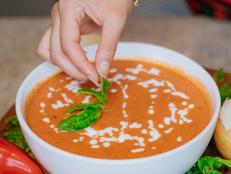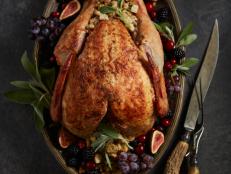For My Family, This Holiday Holds the Promise of Another Party That Never Comes
Baked into a rosca de reyes is a plastic baby Jesus — and the playful burden of throwing the next celebration.

Andrea Aliseda
When I was a little girl my mom pointed up at the sky, moody and starry one January night, and said, “ves esas tres estrellitas? Son los reyes magos.” See those three stars? They’re the three kings. A star for each king, dotted vertically against the horizon. My eyes lit up – somehow the knowledge of the Three Kings watching over me from the depths of the night sky gave me comfort. They did, after all, gift me my Easy-Bake oven.
It turns out that what I was looking at that whole time, with total wonder, was just Orion’s belt.
Though made-up, my mom’s sweet tale was based on the story behind Dia de los Reyes Magos. Also known as Three Kings’ Day, the holiday is named after the Christian Bible’s Three Wise Men: Melchior, Caspar and Balthazar – who represent Europe, Arabia and Africa. According to the Bible, they traveled by horse, camel and elephant for 12 days, with the sole guidance of the star of Bethlehem leading them across the desert to bless the newborn baby Jesus with three special gifts. The holiday celebrates the Kings’ visit and the revelation of God incarnate as Jesus Christ.

Universal Images Group/Hulton Fine Art/Getty
Admittedly, I feel funny telling the story because not a drop of religious devotion courses through my veins. But Catholicism is a backdrop to my Mexican culture. It is embedded in our traditions and key to understanding them.
It’s one way to understand Dia de los Reyes Magos’ piece de resistance: rosca de reyes, a sweet bread akin to pan muerto, and served after dinner, which in my family consisted of tamales. The bread is modeled after a crown to symbolize not only the headpieces of the Three Kings, but the king of kings, Jesus Christ. It’s encrusted in chunky strips of sugar paste to mimic the crown’s arches, and decorated with a variety of fruits such as maraschino cherries, dried figs, candied orange, acitron and quince paste, to represent the crown’s colorful jewels. But here’s the kicker: hidden inside are small, white plastic baby Jesuses. Though, they didn’t start as such.
When the tradition first began in 15th-century Belgium, the babies were beans, or habas, as depicted in Belgian artist Jacob Jordaens’ 17th-century painting, The Feast of the Bean King. The tradition at the time dictated that the person to get said bean would be treated like royalty for the night. It wasn’t until the tradition made its way to France that finding the bean began to signify getting the responsibility to throw a party, which is closer to how we celebrate in Mexico. However, to avoid throwing parties, people began swallowing the beans. So the French began to use inedible objects, and thus the use of the ceramic baby Jesus was born. This tradition made its way to Spain, and well, the rest is unforgettably violent history.
Despite its complicated past, el Dia de los Reyes Magos will always be something special to me. Now, when friends and family gather for the holiday, we carve the rosca de reyes, and discover our destinies in its thick, decadent slices. Getting the baby actually feels like good luck, and some say those who find it are blessed. Though, our tradition also dictates that the first recipient of the plastic baby Jesus must make the tamales for a follow-up party on February 2, el Dia de la Candelaria, a holiday that celebrates the purification of the Virgin Mary. But really, it’s just another excuse to keep the festivities rolling. And truthfully, part of the tradition, in my experience, is never fulfilling the promise of the tamales, or the party. Though we insist every single time with Rompope-fueled enthusiasm that the party will happen, and the tamales will be there, it simply never does. (But that’s all part of the fun.)
Three Kings’ Day has no expectations, which is what makes it so great. Friends gather without the pressure of bringing gifts, drinking themselves silly with rompope – a Mexican eggnog created by nuns – that I was allowed to have sips of as a child, barely tasting the rum. I can still smell the sweet cigar smoke coming into the living room, hear the chatter of the adults laughing wildly, taste the steaming tamales of rajas con queso.
Once the party was over, my little brother and I topped off Three Kings’ Day by rushing into our rooms and picking the perfect shoe to put under the Christmas tree, in hopes of receiving a little gift from the Kings. My mom always managed our expectations during the holidays, saying that the reyes magos would be a little short on money that year, but other times it was Santa “Clos” who would fall short – she, apparently, was in good communication with them.
My brother and I left carrots for the Three Wise Men’s camel, horse and elephant. Sometimes we woke up to half-chewed carrots and dirt tracks on the living room floor. Sometimes, we woke up to a crisp American dollar rolled up in our shoe. And sometimes, I’d wake up to a singularly outstanding and fitting gift, like my very own Easy-Bake oven – proof that, even if the stars were not watching over me, my mom always was.
Related Content:






























